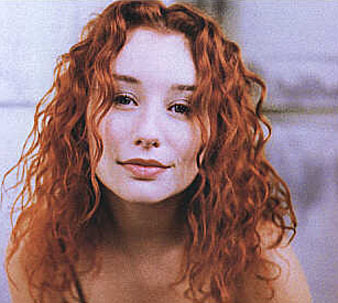Sound Familiar?
“Seven,” “In Circles”
Who Are They?
One of the first bands to establish emo as a music genre.
Before My Chemical Romance and The Used brought their own
eyeliner-clad brand of emo to middle schoolers everywhere, Seattle-based sad
boys Sunny Day Real Estate ruled the scene.
Guitarist Dan Hoerner and bassist Nate Mendel met at the
University of Washington in 1992 and decided to form a band with drummer
William Goldsmith. After releasing a demo tape under the name Empty Set, the
threesome went through several name changes (including Chewbacca Kaboom and One
Day I Stopped Breathing, the latter being the single most emo band name in
history). They eventually settled on Sunny Day Real Estate and started the search
for a lead singer.
Enter Jeremy Enigk. Before Jeremy came along, Dan did most
of the vocals. Dan’s style was more in the hardcore vein, but Jeremy had more
emotional depth to his voice, which led the band to adopt slower tempos. And
that is essentially the formula for a ‘90s emo band.
Sunny Day’s first album, Diary,
was released in 1994 on Sub Pop. The band embarked on pretty successful US tour
with Shudder to Think and Soul Coughing, and even appeared on The Jon Stewart Show and MTV’s 120 Minutes. After the tour, Sunny Day
regrouped to record a new album. And that’s kind of where everything fell
apart.
The band broke up during the recording of Sunny Day Real Estate (or LP2, or The Pink Album) in 1995. Rumor has it that the root cause of the
break-up was Jeremy’s sudden conversion to Christianity, but there really isn’t
any solid proof of that.
(Fun fact: According to Jeremy, most of the songs on LP2 have incomplete lyrics because he
and Dan never bothered to sit down and finish them. As a result, some songs are
just pure gibberish.)
After Sunny Day called it quits (the first time, at least),
Jeremy pursued a solo career while Nate and William joined Dave Grohl and the Foo Fighters. William eventually ditched the band, but Nate stayed.
A couple years later, the band reformed (sans Nate, who
didn’t want to leave the Foo Fighters) and released How It Feels to Be Something On in 1998.
Where Are They Now?
Unfortunately inactive, but we can always hope for another
reunion.
Sunny Day left Sub Pop after releasing a live album and
signed to another independent label, Time Bomb Recordings. The Rising Tide was released in 2000, and the band immediately
embarked on a lengthy US tour. Sunny Day planned to go on its first overseas
tour after traveling the US, but Time Bomb pulled all tour funding at the last
minute. Apparently the label had invested far too much money in an album by
Peter Searcy, which left it virtually bankrupt.
Since Timb Bomb could no longer afford to have Sunny Day (or
any other bands, for that matter) on its roster, the label shut down and our
heroes decided to disband once more.
After the second break-up, Jeremy, William and Nate got
together to form The Fire Theft, which didn’t last long since Nate still had an
obligation to the Foo Fighters.
Sunny Day eventually reunited again 2009 for a tour, and
made an appearance at Coachella in 2010.
As for new material, nothing has surfaced (and probably
never will). Dan claimed the band had started recording in 2010, but Nate
basically crushed everyone’s hopes and dreams last year by confirming that
Sunny Day Real Estate is currently inactive. According to him, the band
attempted to record a new album, but the sessions just “fell apart.”
But Why Sunny Day
Real Estate?
Even though this band has basically broken up yet again,
there’s always hope for yet another reunion and maybe, just maybe, new material
in the not too distant future. A girl can dream, okay?
What Does Sam Think?
I will admit that I had an “emo” phase in my middle school
years. Much like most people my age (wow, that made me sound a little too old),
I was exposed to bands like My Chemical Romance, Hawthorne Heights and The Used
at the very impressionable age of 13. At that point, I thought emo was a new
thing (and that eyeliner and a Hot Topic-approved wardrobe were required).
As I grew older, I discovered that emo actually predated Hot
Topic. The genre, then known as “emotional hardcore,” originated in the
hardcore punk scene of the mid-1980s with bands like Rites of Spring and
Embrace. Emo was reinvented in the ‘90s with a less abrasive sound thanks to
bands like Jawbreaker and, of course, Sunny Day Real Estate.
I started listening to Sunny Day in high school and was
immediately blown away by the band’s mature sound. I’m not saying MCR sounds
childish or anything, but there’s definitely something more refined to Sunny
Day. They don’t try to be aggressive like their hardcore predecessors, but
there’s still power behind the slow tempos and shimmering guitars.
My favorite aspect of this band has got to be Jeremy Enigk’s
voice. This guy has such a unique voice and it captures emotion so well. It’s
not beautiful in a conventional way—he rasps and strains on the higher notes.
But all that strain and gravel hits me harder than some guy screaming in my ear
(though I do enjoy that vocal style, too).
Diary remains one
of my favorite albums of the ‘90s (you can read a more detailed fangirl account
here) because it’s the perfect mix of raw emotion and excellent
instrumentation. Keep in mind that this album came out at the tail end of the
grunge era. The difference between emo and grunge is pretty obvious, but I
think Sunny Day bridges that gap quite nicely.




